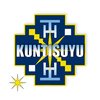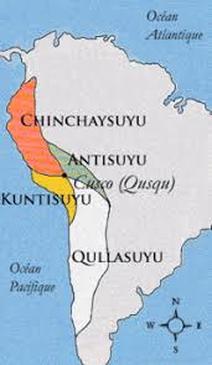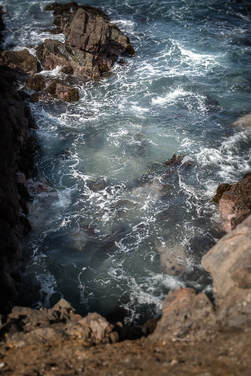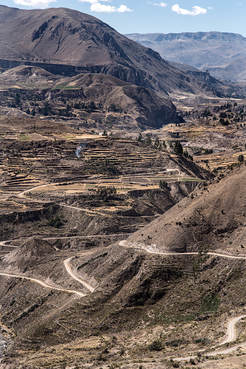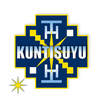The Tawantinsuyu
|
At its height in the early 16th century, the Inka civilization was the largest empire in pre-Columbian America, and possibly the whole world. From 1438 to 1533, the Inkas conquered and assimilated the land and tribes from the whole of Peru, large parts of modern Equador, western and south central Bolivia, northwest Argentina, north and central Chile and a small part of southwest Columbia.
The Inkas divided their empire into four suyus, or regions, extending out from the capitol city of Cusco, or known in their native Quechuan language as the “Navel of the Earth.” Each suyus was comprised of diverse populations, environments and resources, connected by a network of extensive roadways, storehouses and administrative stations that served to unify and contribute to the whole of the empire and to the maintenance and balance of the Great Web of Life. Collectively, the Inkas referred to their kingdom as the Tawantinsuyu, roughly translated as “Land of the Four Quarters” or “The Four Parts Together." |
These four quarters were named Qollasuyu (south; high plains and grasslands), Kuntisuyu (west; coastal region), Chinchaysuyu (north; agricultural region) and Antisuyu (east; upper rainforest).
The KuntisuyuIn serving the Tawantinsuyu of the Inkan empire, the Kuntisuyu was the southwestern provincial region of the Inca Empire.
It was the smallest suyu of all and was located along the southern coast of modern Peru, extending into the highlands towards Cusco. The Kuntisuyu provided important resources from the sea and was a land of dramatic peaks, volcanoes, and deep gorges. |
Our Global Shamanic CommunityPatterned by don Oscar Miro-Quesada, originator of the Pachakuti Mesa Tradition, Our Global Shamanic Community is a living mirror of this ancient Inka empire and is organized into five regional groups within the US with additional communities worldwide.
|
Southwest Region: Kuntisuyu
Arizona, California, Hawaii, Nevada, New Mexico, Oregon, Texas.
Suyu Contact: Heather Weingartner; [email protected]; (530) 966-7799
Local Ayllus:
Northern California Ayllu
Contact: Greg Iadarola, [email protected]
Or: Charlene Cooper, [email protected]
Rio Grande Valley Ayllu – Brownsville, Texas area
Contact: Gabriella Galvan, [email protected], 956-346-3086
Arizona, California, Hawaii, Nevada, New Mexico, Oregon, Texas.
Suyu Contact: Heather Weingartner; [email protected]; (530) 966-7799
Local Ayllus:
Northern California Ayllu
Contact: Greg Iadarola, [email protected]
Or: Charlene Cooper, [email protected]
Rio Grande Valley Ayllu – Brownsville, Texas area
Contact: Gabriella Galvan, [email protected], 956-346-3086
Northwest Region: Chinchaysuyu
Alaska, Washington, Idaho, Montana, North Dakota, South Dakota, Minnesota, Iowa, Wisconsin, Illinois, Michigan, Indiana, Ohio, British Colombia, Yukon Territory, Northwest Territories, Alberta, Saskatchewan, Manitoba, Nunavut
Suyu Contact: Darcy Kopas; [email protected]
Local Ayllus:
Chaska Mayu Ayllu
Contact: Darcy Kopas; [email protected]
Alaska, Washington, Idaho, Montana, North Dakota, South Dakota, Minnesota, Iowa, Wisconsin, Illinois, Michigan, Indiana, Ohio, British Colombia, Yukon Territory, Northwest Territories, Alberta, Saskatchewan, Manitoba, Nunavut
Suyu Contact: Darcy Kopas; [email protected]
Local Ayllus:
Chaska Mayu Ayllu
Contact: Darcy Kopas; [email protected]
Central Region: Chawpinsuyu
Wyoming, Colorado, Utah, Nebraska, Kansas, Missouri, Oklahoma
Suyu Contact: Garry Caudill; [email protected]
Wyoming, Colorado, Utah, Nebraska, Kansas, Missouri, Oklahoma
Suyu Contact: Garry Caudill; [email protected]
Northeast Region: Antisuyu
Pennsylvania, New York, Maryland, Delaware, Rhode Island, New Jersey, Connecticut, Massachusetts, New Hampshire, Vermont, Maine, Ontario, Quebec, Newfoundland, Prince Edward Island, Nova Scotia, New Brunswick
Suyu Contact: [email protected]
Pennsylvania, New York, Maryland, Delaware, Rhode Island, New Jersey, Connecticut, Massachusetts, New Hampshire, Vermont, Maine, Ontario, Quebec, Newfoundland, Prince Edward Island, Nova Scotia, New Brunswick
Suyu Contact: [email protected]
Southeast Region: Qollasuyu
Arkansas, Louisiana, Mississippi, Georgia, Alabama, Florida, South Carolina, North Carolina, Tennessee, Kentucky, Virginia, West Virginia
Suyu Contact: David Jordan: [email protected]
Arkansas, Louisiana, Mississippi, Georgia, Alabama, Florida, South Carolina, North Carolina, Tennessee, Kentucky, Virginia, West Virginia
Suyu Contact: David Jordan: [email protected]
